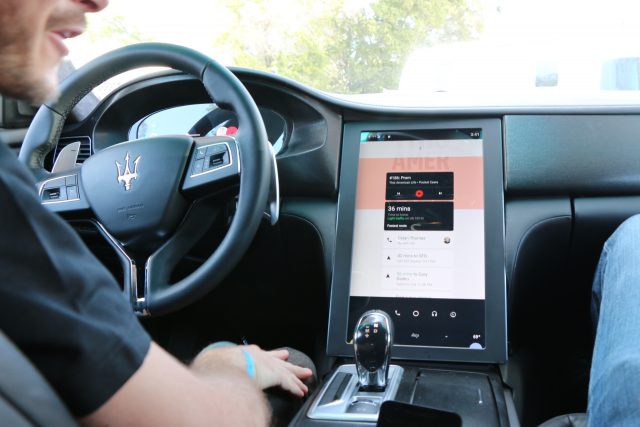Today, drivers can access the wonders of Android while on the road using Android Auto, through compatible vehicles that interface with the Android Auto app. At Google IO 2016, however, Google flaunted a deeper implementation of Android Auto in the form of a Maserati concept car.
Actually, you could consider this Maserati the world’s first Android car. Current vehicles have Android Auto support, but they work with connected apps and essentially project Android onto the screen. This concept car is actually running Android natively. The huge 4K display in the dashboard isn’t only an “infotainment” center, but can now operate core vehicle functionality thanks to new APIs and features in Android N.
That means the same screen from which you’ve grown accustomed to playing music, making calls, and controlling navigation will now let you set your car’s air conditioning and seat warmers. This particular car actually has seat vibrators, controllable directly from the dash screen.
The bottom of the screen shows 5 primary buttons:
- Navigation
- Phone
- Home Screen
- Audio/Multimedia
- System Apps
The home screen shows a stream of relevant content on large, easily scannable/scrollable cards such as recent calls, possible destinations, and other bits of information you’re likely to want to see. And of of course you’ll have access to Android Auto optimized apps such as Pocketcasts, Spotify, Google Play Music, and Pandora.

The experience looks brilliant on the huge 13-inch display, especially the big and bold maps while navigating. It’s all powered by Qualcomm’s Snapdragon 828 chipset, including the 720p display found behind the steering wheel.
There aren’t any consumer-ready vehicles that have been announced with this deeper Android integration, and Google may have trouble convincing manufacturers to hand over the keys to the larger driving experience, but we’re expecting to see comparable models roll out in 2017.













Comments